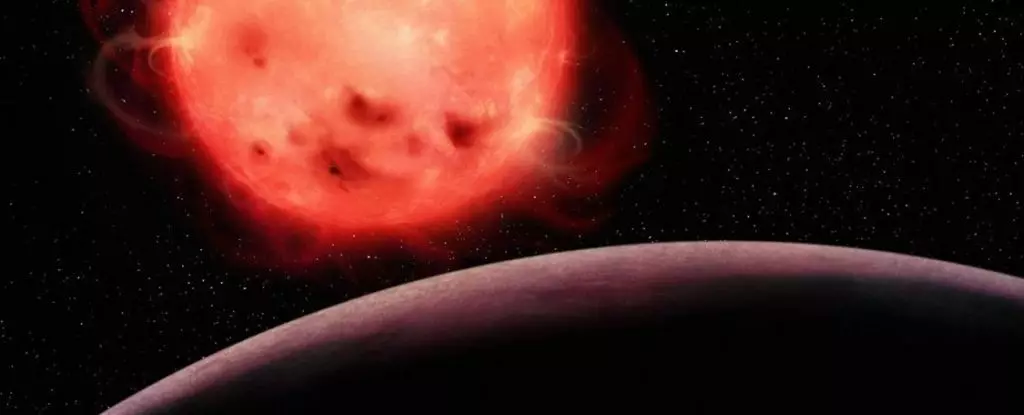Earlier this year, the astronomical community experienced disappointment when the James Webb Space Telescope (JWST) revealed that TRAPPIST-1b, an exoplanet 40 light-years away from Earth, has no detectable atmosphere to shield it from the intense radiation of its host star. Although this finding was not entirely surprising, as the goal was to study a smaller, rocky world at cooler temperatures, new near-infrared spectroscopic observations conducted by the JWST have shed light on an unexpected challenge: the influence of the exoplanet’s host star on accurate measurements.
Stars do not maintain a constant brightness; they exhibit variations due to the presence of starspots (areas of dimming) and faculae (bright spots). Unfortunately, these fluctuations can significantly impact spectroscopic observations of exoplanet atmospheres. Scientists capture these observations when an exoplanet transits in front of its host star, causing a slight dimming of the star’s light. However, some of the star’s light passes through the exoplanet’s atmosphere on its rim. By analyzing changes in the light spectrum during the transit, researchers can search for the signatures of specific molecules absorbing and re-emitting wavelengths of light.
One major challenge researchers face is the contamination of spectroscopic observations by stellar activity. In addition to the contributions from starspots and faculae, stellar flares – sudden bursts of brightness lasting several minutes or hours – can further complicate measurements. The presence of these stellar activities affects the accuracy of determining the amount of light blocked by the exoplanet. Therefore, it becomes essential to account for all these unpredictable factors to ensure the correct interpretation of data.
To unveil the true nature of the exoplanet and the effects of stellar contamination, the team conducted two analyses of the data. Firstly, they removed the stellar contamination from the observations, and secondly, they kept it intact. Surprisingly, both results exhibited striking similarities. This confirmed the results obtained from mid-infrared photometric observations, which had shown that TRAPPIST-1b lacks an atmosphere. However, the significance of this work lies in the revelation of the critical role played by stellar contamination in the data analysis.
Fortunately, this discovery is a valuable step forward. The TRAPPIST-1 system holds seven exoplanets, of which three are located within the star’s habitable zone – an optimal distance for the existence of liquid water and potentially life as we know it. While the JWST is yet to investigate these habitable zone worlds, understanding the potential impact of stellar contamination on observations enables scientists to develop appropriate mitigation strategies. By accounting for stellar activities and their influence on measurements, researchers can strive for more accurate interpretations of exoplanet data.
The journey into the exploration of exoplanets is not without obstacles, and stellar contamination has proven to be a significant challenge. While the search for extraterrestrial life continues, the recent findings highlight the importance of considering stellar activity during data analysis. By accounting for the influence of starspots, faculae, and stellar flares, astronomers can obtain more reliable and accurate measurements. As technology advances and new missions, like the JWST, push the boundaries of our understanding, scientists can refine their methods and pursue a more comprehensive exploration of the universe.


Leave a Reply